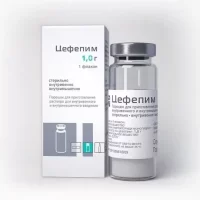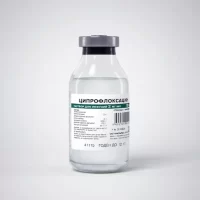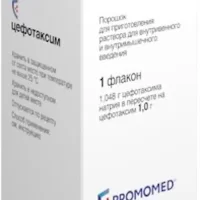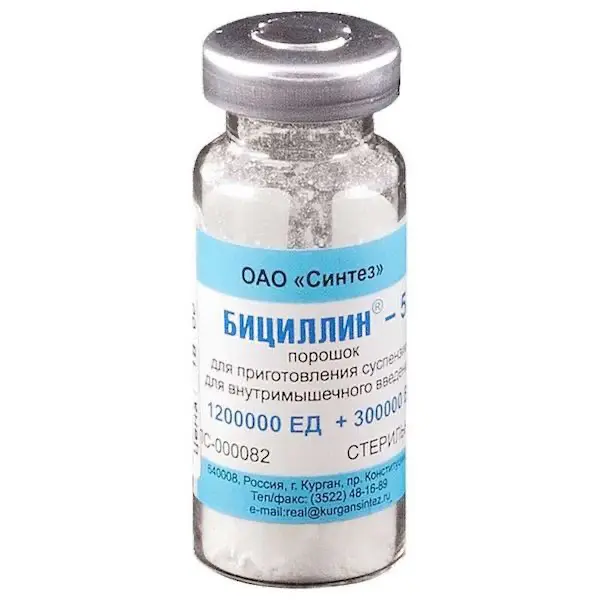Description
Baccefort Pharmacodynamics
The antibacterial component of the drug cefoperazone! sulbactam is cefoperazone – a third generation cephalosporin, which acts on sensitive microorganisms during their active reproduction by inhibiting the biosynthesis of cell wall mucopeptide. Sulbactam has no clinically significant antibacterial activity (except for Neisseriaceae and Acinetobacter). However, it has been observed to be an irreversible inhibitor of most of the major beta-lactamases produced by microorganisms that are resistant to beta-lactam antibiotics.
The ability of sulbactam to prevent the destruction of penicillins and cephalosporins by resistant microorganisms was confirmed in studies using resistant strains, against which sulbactam had a pronounced synergism with penicillins and cephalosporins. In addition, sulbactam interacts with some penicillin-binding proteins, so cefoperazone + sulbactam often has a more pronounced effect on sensitive strains than cefoperazone alone.
The combination of sulbactam and cefoperazone is active against all microorganisms sensitive to cefoperazone. In addition, it is synergistic against various microorganisms, primarily: Haemophilus influenzae, Bacteroides spp., Staphylococcus spp., Acinetobacter calcoaceticus, Enterobacter aerogenes, Escherichia coli, Proteus mirabilis, Klebsiellapneumoniae, Morganella morganii, Citrobacter freundii, Enterobacter cloacae, Citrobacter diversus.
Cefoperazone+sulbactam is active in vitro against a wide range of clinically relevant microorganisms.
Gram-positive: Staphylococcus aureus (producing and not producing penicillinase), Staphylococcus epidermidis, Streptococcus pneumoniae, Streptococcus pyogenes (group A beta-hemolytic streptococcus), Streptococcus agalactiae (group B beta-haemolytic streptococcus), most other strains of beta-haemolytic streptococci, many strains of Streptococcusfaecal is (enterococci).
Gram-negative: Escherichia coli, Klebsiella spp., Enterobacter spp., Citrobacter spp., Haemophilus influenzae, Proteus mirabilis, Proteus vulgaris, Morganella morganii, Providencia rettgeri, Providenciaspp., Serratia spp. (including Serratia marcescens), Salmonella spp. and Shigella spp., Pseudomonas aeruginosa and some other Pseudomonas spp., Acinetobacter calcoaceticus, Neisseria gonorrhoeae, Neisseria meningitidis, Bordetella pertussis, Yersinia enterocolitica.
Anaerobic microorganisms.
Gram-negative bacilli (including Bacteroides fragilis, other Bacteroides spp. and Fusobacteriumspp.)
Gram-positive and gram-negative cocci (including Peptococcus spp., Peptostreptococcus spp. and Veillonella spp.).
Gram-positive bacilli (including Clostridium spp., Eubacterium spp. and Lactobacillus spp.).
The following sensitivity levels have been established for sulbactam/cefoperazone. The minimum suppressive concentration (MSC) µg/ml, expressed as cefoperazone concentration, was less than or equal to 16 for sensitive microorganisms, 17 to 63 for organisms with intermediate sensitivity, and over 64 for resistant ones. The sensitivity zones for the disc-diffusion method are: for sensitive microorganisms, ≥ 21 mm; for organisms of intermediate sensitivity, 16 to 20 mm; and for resistant organisms, ≤ 15 mm.
Serial dilutions of sulbactam/cefoperazone at a ratio of 1:1 in broth or agar media can be used to determine MPC. To determine MPC using the disc-diffusion method, a disc containing 30 µg of sulbactam and 75 µg of cefoperazone is recommended.
The following quality control standards are recommended for discs containing 30 µg sulbactam and 75 µg cefoperazone. For the control strain Acinetobacter spp. (ATCC 43498), the zone diameter is 26-32 mm; for Pseudomonas aeruginosa (ATCC 27853), 22-28 mm; for Escherichia coli (ATCC 25922), 27-33 mm; for Staphylococcus aureus (ATCC 25923), 23-30 mm.
Indications
Infectious and inflammatory diseases caused by microorganisms sensitive to the drug:
– upper and lower respiratory tract infections;
– kidney and urinary tract infections;
– peritonitis, cholecystitis, cholangitis and other abdominal infections;
– sepsis;
– meningitis;
– Skin and soft tissue infections; bone and joint infections; gonorrhea;
– Pelvic inflammatory diseases, endometritis, pelvio-peritonitis and other reproductive tract infections.
Contraindications .
Hypersensitivity to penicillins, sulbactam, cefoperazone or other cephalosporins.
Caution:
Severe hepatic and renal insufficiency. Newborns, including prematurely born children.
Pregnancy and lactation:
Adequate clinical studies of the drug have not been conducted. Cefoperazone + sulbactam penetrates through the placental barrier and into the breast milk. During pregnancy the drug is used only if expected benefits to the mother exceed the potential risk to the fetus and neonate.
Dosage and administration method
- Intravenous (IV) (by jet and drop) and intramuscular (IV/m). When a single dose exceeding 2 g of the drug, intravenous administration is preferable.
- Use in adults. In adults, cefoperazone+sulbactam is recommended in the following daily doses:
Ratio Daily dose, grams
Cefoperazone+sulbactam Sulbactam Cefoperazone
1:1 2,0-4,0 1.0-2.0 1,0-2,0 - The daily dose should be divided into equal portions and administered every 12 hours.
- In severe or refractory infections, the daily dose of cefoperazone + sulbactam can be increased to 8 g with a 1:1 ratio of the main components (i.e. 4 g of cefoperazone). Patients receiving cefoperazone + sulbactam in a 1:1 ratio may require additional administration of cefoperazone. The daily dose of the drug should be divided into equal portions and administered every 12 hours. Recommended maximum daily dose of sulbactam is 4 g.
- Administration in renal insufficiency. In patients with creatinine clearance less than 30 ml/min the dose of cefoperazone+sulbactam is calculated according to the sulbactam dose, as presented in the table below:
Creatinine clearance Maximum sulbactam dose
15-30 ml/min 1 g every 12 h
Less than 15 mL/min 500 mg every 12 h - In severe infections, additional administration of cefoperazone may be required. Pharmacokinetics of sulbactam is significantly altered during hemodialysis. The half-life of cefoperazone from blood serum is slightly reduced during hemodialysis. Therefore, the drug administration should be planned after dialysis.
- In cases of impaired liver function, dose changes may be required in cases of severe biliary obstruction, severe liver disease, as well as renal failure combined with any of the above conditions. In patients with hepatic impairment and concomitant renal impairment, monitoring of serum cefoperazone concentrations and dose adjustment, if necessary, is necessary. If daily dose of cefoperazone does not exceed 2 g, there is no need to monitor its serum concentration.
- Administration in children. In children, cefoperazone + sulbactam is recommended to be used in the following doses:
Ratio Daily dose, mg/kg/day
Cefoperazone+sulbactam Sulbactam Cefoperazone
1:1 40-80 20-40 20-40 - The dose should be divided in equal parts and administered every 6-12 hours.
In severe or refractory infections, the daily dose of the drug may be increased to 160 mg/kg/day (at a 1:1 ratio of the main components), which should be divided into 2-4 equal parts. - For newborns during the first week of life, the drug should be administered every 12 hours. Maximum daily dose of sulbactam in children should not exceed 80 mg/kg/day.
- Preparation of solutions for parenteral use
Dilution:
Dose of drug, g Equivalent doses
Cefoperazone + sulbactam, g Volume of solvent, ml Maximum final
concentration, mg/ml
1,0 0,5+0,5 3,4 125+125
2,0 1,0+1,0 6.8 125+125
3,0 1,5+1,5 10,2 125+125
4,0 2,0+2,0 13,6 125+125 - Intramuscular administration. For preparation of solution for intramuscular injection use water for injection (see table) or 2% lidocaine solution. 2% lidocaine solution should not be used for initial dilution of cefoperazone+sulbactam. due to their pharmaceutical incompatibility. Compatibility can be achieved by preparing the solution in 2 steps. For the initial dilution, use water for injection in the amounts listed below:
1.0 g (0.5 g + 0.5 g) cefoperazone + sulbactam – 2.6 ml;
2.0 g (1.0 g + 1.0 g) of cefoperazone + sulbactam – 5.0 ml. - The resulting solution is then diluted with 2% lidocaine solution, adding 0.8 ml or 1.7 ml of local anesthetic to the solution containing 1.0 g or 2.0 g of cefoperazone+sulbactam obtained in the initial dilution, respectively, to obtain antibiotic solution in 0.5% lidocaine solution.
- It is administered deeply intramuscularly in areas of the body with a pronounced muscular layer, for example, the upper outer quadrant of the buttock).
Intravenous injection. - For intravenous jet injection, the contents of the vial are dissolved as indicated in the table with one of the following infusion solutions: 5% dextrose solution, 0.9% sodium chloride solution, 5% dextrose solution in 0.225% sodium chloride solution, 5% dextrose solution in 0.9% sodium chloride solution or water for injection. The resulting solution is administered for at least 3 minutes.
- For intravenous infusion, the contents of the vial are dissolved as indicated in the table with one of the following infusion solutions: 5% dextrose solution, 0.9% sodium chloride solution, 5% dextrose solution in 0.225% sodium chloride solution, 5% dextrose solution in 0.9% sodium chloride solution, or water for injection; the resulting solution is diluted to 20-100 ml with the same solvent that was used for initial dissolution. The drug is administered intravenously by IV drip for 15-60 min.





